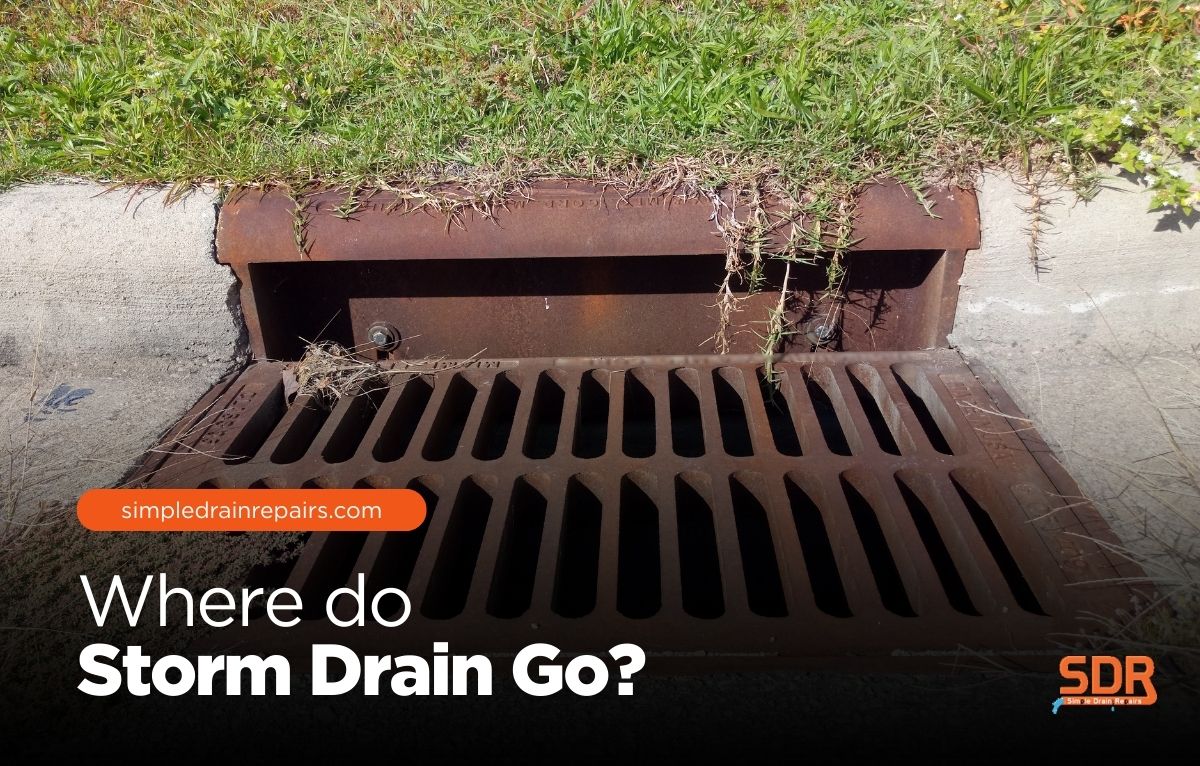
Storm drains are something most people pass by without a second thought, yet they play a major role in protecting homes, businesses, and public areas from flooding.
When heavy rain falls, storm drains collect the water and direct it out of sight. But many property owners ask the same question: where do storm drains go?
The answer lies in an intricate network that moves rainwater away from developed areas, protecting property while connecting to larger water systems. Understanding this journey sheds light on why storm drain care is vital for every community.
A storm drain is designed to capture and direct rainwater runoff away from buildings and paved areas. These drains prevent water from pooling in driveways, parking lots, and yards by moving it into underground systems that connect to local waterways or treatment facilities.
When asking what is a storm drain, the answer is simple: it is a crucial part of infrastructure that keeps water from overwhelming properties and streets.
By diverting rainwater, storm drains reduce flooding and protect roads from erosion. They also help keep basements dry, maintain the integrity of landscaping, and reduce standing water that could attract pests.
For both residential and commercial properties, storm drains are part of a larger drainage system that protects against water-related damage.
The water collected by storm drains typically flows into one of three destinations. In many urban areas, stormwater is directed to nearby rivers, streams, or bays.
In some places, storm drains lead to retention or detention basins that hold excess water until it can safely re-enter the environment.
Other systems may carry the water to municipal treatment facilities, although this is less common due to the sheer volume of runoff during storms.
To better understand where do storm drains go, consider these common destinations:
Each of these destinations serves the purpose of moving rainwater away quickly and efficiently, reducing the risks of standing water, erosion, and property damage.
While storm drains protect properties from flooding, they also have an impact on the environment. Stormwater often carries pollutants such as oil, trash, fertilizers, and sediment from streets and yards.
When this water enters rivers or bays untreated, it can affect aquatic life and water quality.
Communities address this challenge through stormwater management programs. Green infrastructure like rain gardens, permeable pavement, and bioswales are increasingly used to filter pollutants before water reaches natural sources.
Public awareness is also important, since simple actions like keeping trash, grease, and chemicals out of storm drains can make a big difference in water quality.
Even though storm drains are designed for heavy use, they require care to remain effective. Property owners should be mindful of signs that a storm drain system is under stress.
Pooling water around curbs or parking lots, unusual odors, or slow drainage during rainfall often point to clogs or damage. In addition, visible debris near the grate suggests that material may be building up inside the drain itself.
Key signs that indicate a storm drain needs maintenance include:
Recognizing these issues early prevents bigger problems and reduces the cost of repair.
To ensure storm drains work properly, routine maintenance is essential. Leaves, sediment, and debris build up over time, restricting flow and leading to backups.
Professional cleaning and inspection can prevent small issues from turning into larger damage.
Property owners should inspect drains before and after storms, remove visible debris and trash around the inlet, and schedule professional hydro jetting when heavy buildup is suspected.
Camera inspections are also useful for diagnosing hidden problems, while trenchless repair options can restore pipes that are cracked or damaged.
Regular upkeep ensures storm drains can handle heavy rains and continue protecting both properties and the surrounding community.
Homeowners, businesses, and municipalities all benefit from professional storm drain services. With advanced tools like high-pressure jetting, mechanical cleaning, and video inspections, professionals can remove stubborn blockages and detect cracks or root intrusion deep within the system.
Trenchless repair solutions offer an efficient way to restore flow without digging up landscaping, pavement, or foundations.
For businesses in particular, reliable storm drains are essential to prevent costly downtime and damage during severe weather.
By knowing where storm drains go and understanding how to maintain them, property owners can work with professionals to keep their systems operating effectively.
The next time you wonder where do storm drains go, think of the journey from streets to streams. Storm drains carry water away from homes, businesses, and public areas, protecting properties from flooding and directing water into larger natural or man-made systems.
While their role is critical, they also require maintenance and care to prevent clogs, pollution, and costly damage.
For property owners in New Jersey, Simple Drain Repairs offers expert storm drain cleaning, inspection, and repair services. With proven trenchless solutions and a lifetime guarantee on pipe lining, our team ensures your system continues working for years to come.
Contact us today to keep your property safe and your drainage system in top condition.